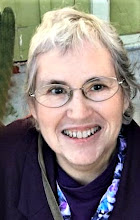Saturday, October 12, 2013
Reading For Craft
Classic Corner
The Scene Book, by
Sandra Scofield
A few months ago I reviewed another classic book on scenes, Make a Scene by Jordan E. Rosenfeld. There
seem to be more craft books written on scenes that any other specific category,
at least on my personal bookshelves. And they are all well written and helpful.
But recently as I looked through them for a current workshop I noticed that
only one showed well-worn edges and had so many colored stickies it resembled
porcupine quills.
The Scene Book
addresses the required principles, but adds a depth and clarity to the practical
application that bridges theory into story, whether fiction or narrative
non-fiction such a memoir.
Scofield lists four basic elements
as necessary for each scene.
“Every
scene has event and emotion.
Every
scene has a function.
Every
scene has a structure.
Every
scene has a pulse.”
“Some vibrancy in the story
makes the scene live on the page and makes it matter to the reader.” Scofield
calls this the pulse and I’ve not seen this addressed as succinctly as she
does. Personally I think this is a critical element, especially in fantasy
genres where we are already stretching imagination to the limits, and memoir
where we are bridging personal lives with compassion and understanding. It ties
it to the emotional resonance we are trying to develop.
Sometimes it will be subtle she says and other times a
heavier beat, but always present. “Pulse
is emotional, an attitude, a state of desire or need. Tension is built from
action; it arises from pulse, must it must be created through conflict, whereas
pulse is a kind of “steady state,” awaiting the trigger to escalate.”
Another strength to The
Scene Book is that Scofield doesn’t stop with theory and definitions, but
also extends into how-to applications through examples of novels and movies. And
then gives concrete exercises for personal works in progress to find just the
right fix to make scenes live beyond correct structure into living scenes.
Share: What book has helped you most understand how to write a scene?
Read deep, marcy
Subscribe to:
Post Comments (Atom)









No comments:
Post a Comment